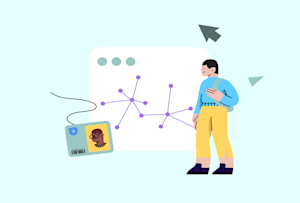Digital Art: The Creative Revolution and Its Impact on Daily Life
Digital art, once a niche in the creative world, has become a global phenomenon that is transforming the way artists and audiences engage with art. It encompasses various forms of artistic expression that utilize digital tools such as computers, tablets, and software programs to create images, animations, and multimedia compositions. With the rise of social media platforms and online art marketplaces, digital art has gained massive recognition and is now an integral part of our visual culture.
In this article, we will explore the biography of digital art, its daily life impacts, history, significance, and its increasing importance to society.
What is Digital Art?
It refers to art that is created using digital technology as a primary medium. Unlike traditional forms of art, which use physical tools like pencils, paint, and canvas, digital art is produced using digital devices such as computers, graphic tablets, and software applications like Adobe Photoshop, Procreate, or Blender. Artists use these tools to create paintings, illustrations, animations, sculptures, and even virtual reality (VR) art.
Digital art has expanded beyond two-dimensional imagery to include dynamic, interactive, and immersive forms of creativity, including virtual art installations and computer-generated simulations.
The History of Digital Art
It began in the mid-20th century when artists and scientists began experimenting with computers and early graphic technology. One of the first examples of computer-generated art dates back to the 1950s and 1960s when pioneers like Frieder Nake and Harold Cohen used computers to generate geometric shapes and abstract images. In the 1980s, personal computers and graphic software became more accessible, making digital art more widespread and refined.
The 1990s saw the birth of digital media art as a distinct genre, with artists like Jeff Koons and Jenny Holzer using technology to produce cutting-edge works. The internet revolution in the 2000s further contributed to the rise of digital art, as artists could now share their work with a global audience.
10 Powerful Facts
- Innovation in Creativity: It allows artists to experiment freely with new ideas and techniques without the constraints of traditional media.
- Wide Accessibility: With digital tools becoming more affordable and accessible, anyone with a computer or tablet can create digital art.
- Interactive Experiences: It can be made interactive, allowing the viewer to engage with the artwork in new and exciting ways.
- Sustainability: It does not require physical materials such as paint or canvas, making it a more sustainable option compared to traditional art.
- Collaborative Potential: Artists can collaborate across distances, using digital platforms and online tools to create works together.
- Art in Motion: Unlike traditional art, digital art can incorporate movement, sound, and even touch, expanding the potential of what art can be.
- Art for the Future: It opens the door to new forms of expression, such as VR art and 3D printing, that could redefine the future of creative work.
- Online Communities: It has created vibrant online communities where artists and fans connect, share, and support each other.
- Art Markets and NFTs: The rise of NFTs (Non-Fungible Tokens) has provided digital artists with new opportunities to monetize their work in online marketplaces.
- Cross-Industry Integration: It is used in various industries, including advertising, video games, film, and fashion, demonstrating its far-reaching influence.
Daily Life Impacts
It has significantly impacted daily life in ways that can often go unnoticed. Here’s how it influences various aspects of our world:
- Visual Culture: It shapes the visual culture that surrounds us in advertisements, social media, websites, and even street art.
- Entertainment: Video games, animated films, and digital comics are all powered by digital art, providing us with hours of entertainment.
- Social Media Influence: Digital artists share their work online, inspiring others and contributing to trends that define modern pop culture.
- Digital Museums and Exhibits: Many museums now feature digital art galleries, providing access to creative works that would have been unimaginable in physical spaces.
- Branding and Marketing: It has transformed how businesses create visual campaigns, from website design to social media content.
Frequently Asked Questions (FAQs)
Q: What are the tools needed for digital art?
A: The basic tools for digital art include a computer or tablet, graphic software like Photoshop or Procreate, and a stylus or graphics tablet.
Q: Is digital art considered real art?
A: Yes, It is widely regarded as real art. It involves creativity, technical skill, and the artist’s vision, much like traditional forms of art.
Q: Can digital art be printed?
A: Yes, It can be printed on various materials, including canvas, paper, and even metal, allowing it to be displayed just like traditional artwork.
Q: How do digital artists make money?
A: Digital artists can earn income through commissions, selling prints, licensing their work, and through NFT sales in online marketplaces.
Significance of Art in Society
It holds a unique place in society as a symbol of innovation, creativity, and the merging of technology with artistic expression. It has democratized art creation, allowing artists from all walks of life to share their work with the world.
- Cultural Influence: art influences pop culture, music videos, fashion design, and advertising. It has become the visual language of the modern era.
- Technological Innovation: It continues to push the boundaries of what technology can achieve in the realm of creativity, leading to new media and experiences.
- Access and Inclusivity: The platforms have made art more accessible to a global audience, allowing individuals who may not have access to traditional art institutions to create, share, and experience art.
- New Creative Opportunities: Artists can now experiment with new forms of art, from interactive installations to virtual worlds, opening doors for endless possibilities.
Wishing the Best
To all the digital artists out there, we wish you continued inspiration, success, and growth as you push the boundaries of creativity. Your work has the power to change the world, shape culture, and inspire future generations.
Why Digital Art is Important to Society
It represents a paradigm shift in how we think about and create art. It is a medium that reflects the digital age we live in, allowing for greater expression, innovation, and connection between artists and audiences. Whether in entertainment, marketing, or social change, digital art plays a crucial role in shaping modern culture and pushing the limits of human creativity.
In conclusion, It is more than just a creative trend – it is a movement that is redefining the artistic landscape, making it more accessible, sustainable, and future-oriented. It’s clear that digital art will continue to influence and inspire, becoming an even more integral part of our lives in the years to come.










